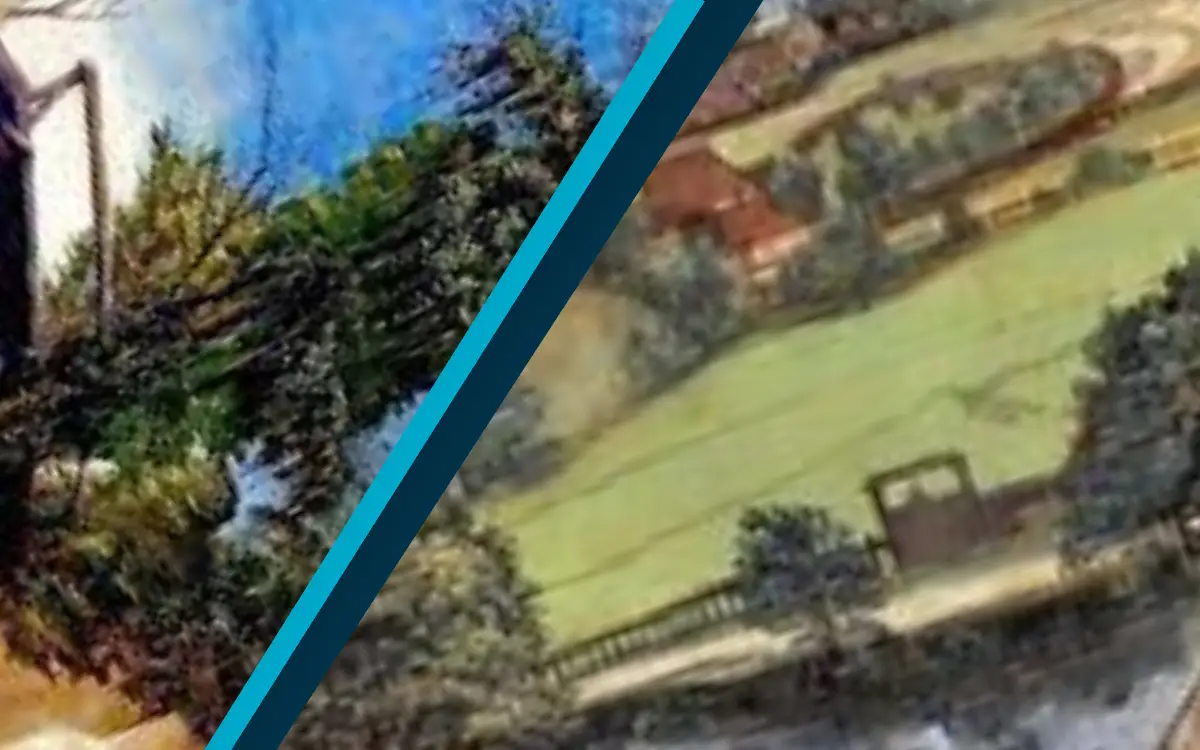During the Renaissance, landscape painting changed drastically, as did many other artistic disciplines. Altdorfer’s Landscapes vs Durer’s Landscapes are two of the most prominent figures of this period who, in their respective ways, depict the natural world. This article explores the intriguing contrasts between the classical landscape realism of Dürer and the mystical landscapes of Altdorfer, illuminating the distinct ways in which both artists contributed to Renaissance art.
Altdorfer’s Mystical Landscapes
Dense Forest Texture
A groundbreaking artistic shift, Altdorfer’s landscapes are famous for the atmospheric effects and thick forest textures that he incorporates into his work. By centering on nature’s mystical and emotional portrayal, he elevated landscape from incidental detail to primary subject. Particularly striking is his unique take on the German forest, a motif that is stereotypically associated with the North but which Altdorfer gives an air of mystery and depth through his work.
Nature’s Emotional Portrayal
Altdorfer’s interpretation of nature is distinctive because it is complex and places an emphasis on the mystical and emotional parts of the natural world. In contrast to his contemporaries’ more realistic depictions, his paintings transport viewers to a world where the awe-inspiring mystery and grandeur of nature take center stage.
Transformation of Landscape Painting
Altdorfer was pivotal in the Renaissance renaissance of landscape painting due to his groundbreaking methods. His work marked a radical break from realistic depictions of nature, opening the door for artists of subsequent generations to investigate landscapes through the lens of emotion and atmosphere.
Dürer’s Classical Landscape Realism
Influence of Italian Travels
However, Dürer’s travels around the Italian peninsula had a significant impact on his landscape paintings. From these encounters, he gleefully incorporated classical motifs into his work, which expertly combined realism with a classically accurate depiction of the human figure. Based on mathematical and perspective principles, his landscapes show a balance between nature and perfect proportions.
Mastery of Nature Details
The painstaking attention to detail is a characteristic of Dürer’s landscapes. Demonstrating his Renaissance-man approach to art, his skill in portraying the realistic details of nature reveals a profound knowledge of the world around him. The evolution of landscape painting owes a great deal to this dedication to accuracy and realism.
Perspective and Realism
Dürer was a trailblazer in landscape painting because of his realistic use of perspective. The use of mathematical concepts in his compositions allowed him to attain an unmatched level of realism and depth for his time. This was evidence of his technical skill as well as his capacity to combine artistic vision with scientific understanding.
Comparative Analysis
Approaches to Landscape Design
Altdorfer‘s Landscapes vs Durer’s Landscapes have differing approaches to landscape painting reveal their divergent views of the natural world. Viewers are enticed into an emotionally charged natural realm by the awe-inspiring and mystical landscapes painted by Altdorfer. In contrast, Dürer uses classical precision and elegance to depict nature, highlighting its beauty and order in his meticulous and realistic depictions.
Nuanced Interpretation of Nature
Their delicate portrayal of the natural world is indicative of the larger currents of the Northern Renaissance. Dürer’s realism offers insights into nature’s depiction, contrasting with Altdorfer’s emphasis on ethereal landscapes.
Influence and Legacy
Altdorfer’s landscapes inspired atmospheric portrayals, while Dürer’s realism elevated detail and perspective in landscape painting.
What techniques did Altdorfer use to create atmospheric landscapes?
Altdorfer employed innovative techniques, including layered glazing and light and shadow considerations, for depth and atmosphere in his landscapes.
How did Dürer’s Italian travels influence his landscape paintings?
Dürer’s landscapes blend classical motifs with realistic detail, inspired by Renaissance ideals encountered during his travels to Italy.
How do Altdorfer’s and Dürer’s use of color in nature depiction differ?
Dürer favored subdued palettes for realism. Altdorfer used vivid colors for ethereal landscapes.
What role does the German forest play in Altdorfer’s landscapes?
The German forest plays a significant role in Altdorfer’s landscapes, representing the wild and mysterious sides of nature. His depictions of forests were rich and nuanced, evoking feelings of wonder and respect for nature.
What was Dürer’s contribution to introducing perspective in landscape painting?
Dürer achieved an unprecedented degree of realism and spatial depth in landscape painting by applying mathematical concepts of perspective.
Conclusion
Altdorfer and Dürer’s landscapes show two different ways of looking at nature in Renaissance art.
Altdorfer’s landscapes evoke strong emotions, contrasting Dürer’s classical realism depicting nature’s glory and harmony. Their Renaissance-inspired works have captivated viewers for centuries, including their contributions to landscape painting.
Their work helps us understand the significance of landscape art and its capacity to portray nature in all its complexity.

Shannon Reyes is a seasoned writer with a knack for crafting engaging blogs on a variety of service industries, including plumbing, cleansing, moving, pest control, and roofing. With a keen eye for detail and a passion for helping readers navigate complex topics, Shannon brings her expertise to life through informative and accessible content.











